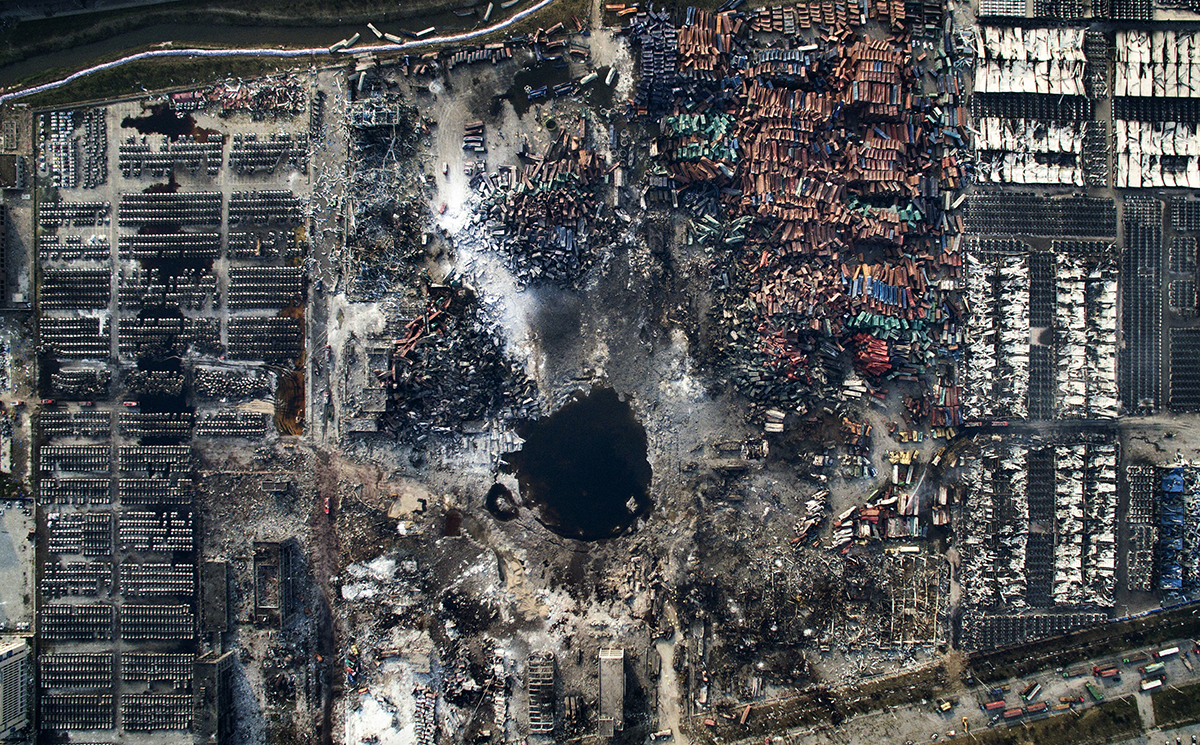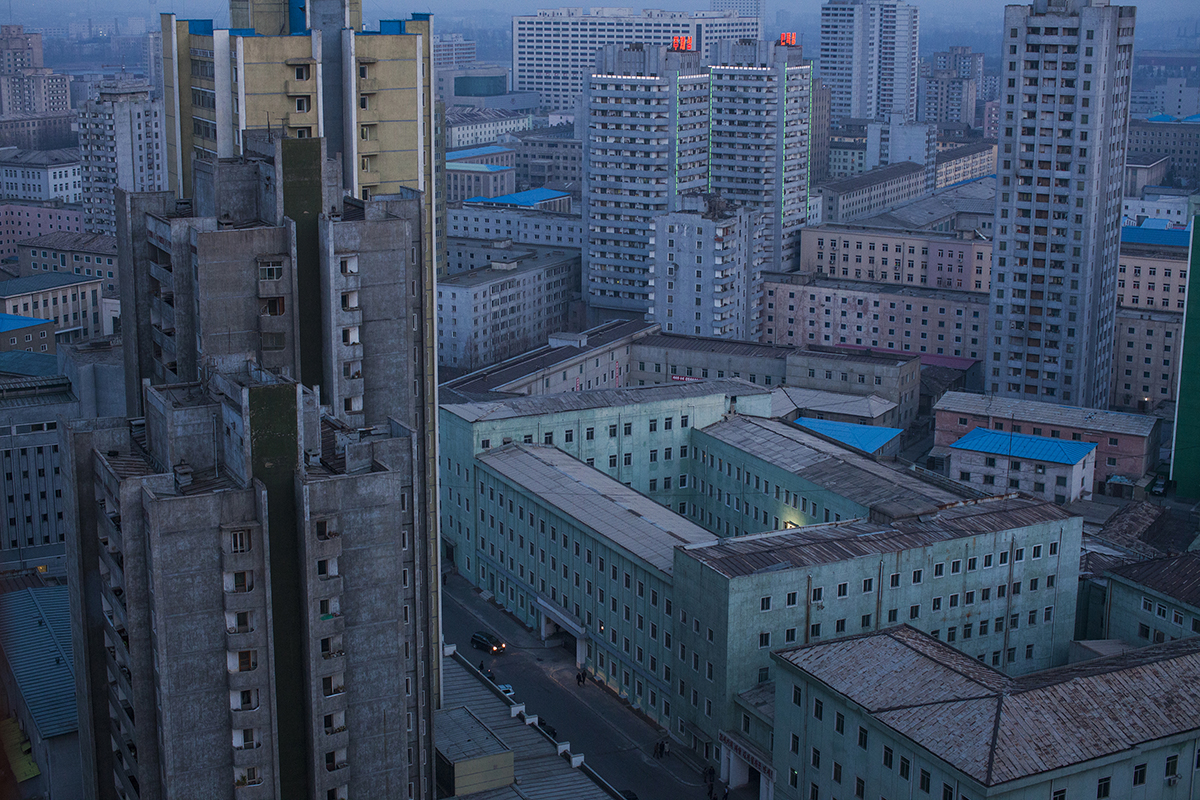For the ninth year in a row, Canadians will have a chance to get up close to some of the world's best photojournalism as the Canadian War Museum in Ottawa hosts World Press Photo 16, an exhibition of the winners of the World Press Photo Foundation's annual contest, which is now in its 59th year.
The 155 winning photographs were selected from more than 80,000 entries by an independent jury and reflect both major world events like the Syrian refugee crisis and the Nepal earthquake, as well as everyday life in 2015.
Among the photographers honoured this year is a Canadian, Kevin Frayer, who took home first prize in the Daily Life (Singles) category for his photo of three men pushing a cart against the backdrop of a coal-fired power plant in northern China. Frayer also earned second prize in the Daily Life (Stories) category for his series depicting the Bliss Dharma Assembly, an annual gathering in the remote Garze Tibetan Autonomous Prefecture.
World Press Photo 16 will be on display in the War Museum's Barney Danson Theatre until August 17, before moving on to Montreal, Toronto and Chicoutimi, Que. View some of the powerful winning images below:
Hope for a New Life (World Press Photo of the Year)

August 28, 2015. A baby is handed through a hole in a razor wire barrier, to a Syrian refugee who has already managed to cross the border from Serbia into Hungary, near Röszke. Hungary was hardening its stance towards refugees attempting to enter the country. In July, Hungary began construction on a four-meter-high barrier fence along the entire length of the frontier with Serbia, to close off border crossings through all but official routes. Refugees attempted to find ways through before the fence was completed on September 14. This group had spent four hours hiding in an apple orchard at night, dodging border police, being gassed with pepper spray, and trying to find a way across. (Photo: Warren Richardson, Australia)
Tianjin Explosion

August 15, 2015. A large pit, wrecked vehicles and damaged buildings remain in the aftermath of explosions in the container storage station of a logistics company in the Port of Tianjin, northeastern China. The warehouse, owned by Ruhai Logistics, was registered for storage of hazardous chemicals. Safety regulations stipulating that public buildings should be at least one kilometer away were not heeded. A series of explosions at the facility resulted in damage to some 17,000 residences and 8,000 vehicles, killing more than 170 people (95 of them firefighters) and injuring hundreds more. (Photo: Chen Jie, China)
March Against Terrorism, Paris

January 11, 2015. People demonstrate their solidarity with victims of terrorist attacks, and voice support for freedom of speech, at the end of a rally at the Place de la Nation in Paris. Marches républicaines (Republican marches) were held throughout the country following the shootings by Islamist gunmen at the offices of the satirical magazine Charlie Hebdo, and a succession of other attacks in and around Paris, which resulted in 16 dead (including three of the assailants). The Paris march took place from the Place de la République to the Place de la Nation. (Photo: Corentin Fohlen, France)
North Korea: Life in the Cult of Kim

April 12, 2011. At dusk, the skyline of central Pyongyang, North Korea. North Korea has been one of the most isolated and least understood countries. Few outsiders have ever had a glimpse of the country and there have been very few independent photographs ever made there. Life In the Cult of Kim, a series by David Guttenfelder, documents urban and rural North Korea, capturing the daily life of its citizens, military events and ceremonies. (Photo: David Guttenfelder, USA, for The Associated Press/National Geographic/The New York Times North Korea: Life in the Cult of Kim)
Neptun Synchro

December 13, 2015. Members of Neptun swimming club’s synchronized swimming section perform in sailboat position, during pre-Christmas Lucia festivities. Synchronized swimming demands advanced water skills and requires strength, flexibility and breath control, as well as artistry and precise timing. Neptun has nearly 100 members who participate in synchronized swimming, ranging in age from four to 65 years old. (Photo: Jonas Lindkvist, Sweden, Dagens Nyheter Neptun Synchro)
China's Coal Addiction

Chinese men pull a tricycle in a neighborhood next to a coal-fired power plant in Shanxi, China, on 26 November 2015. A history of heavy dependence on burning coal for energy has made China the source of nearly a third of the world's total carbon dioxide (CO2) emissions, the toxic pollutants widely cited by scientists and environmentalists as the primary cause of global warming. (Photo: Kevin Frayer, Canada, Getty Images)
Amazon's Munduruku Tribe

Indigenous Munduruku children play in the Tapajos river in the tribal area of Sawre Muybu, Itaituba, Brazil on 10 February 2015. The tribesmen of the Munduruku, who for centuries have sanctified the Tapajos River on which their villages sit, are fighting for survival. Brazil’s government plans to flood much of their land to build a $9.9 billion hydroelectric dam, the Sao Luiz do Tapajos, as part of a wider energy strategy across the Amazon rainforest. (Photo: Mauricio Lima, Brazil, for Al Jazeera America)
Storm Front on Bondi Beach

November 6, 2015. A massive shelf cloud moves towards Bondi Beach in Sydney, Australia. The cloud was part of a weather front that brought violent thunderstorms, with local media reporting damaging winds, hailstones the size of golf balls, and heavy rainfall. Shelf clouds are low cloud banks often with smooth or layered surfaces, and black, turbulent bases. (Photo: Rohan Kelly, Australia, Daily Telegraph)
The Power of Nature

December 13, 2015. Colima Volcano erupts with rock showers, lightning, and lava flows. The volcano, which is one of the most active in Mexico, showed an increase in activity from July onwards. Lightning in volcano eruptions is generated when rock fragments, ash and ice particles in the volcanic plume collide, producing static charges—just as ice particles do in clouds. (Photo: Sergio Tapiro, Mexico)



























